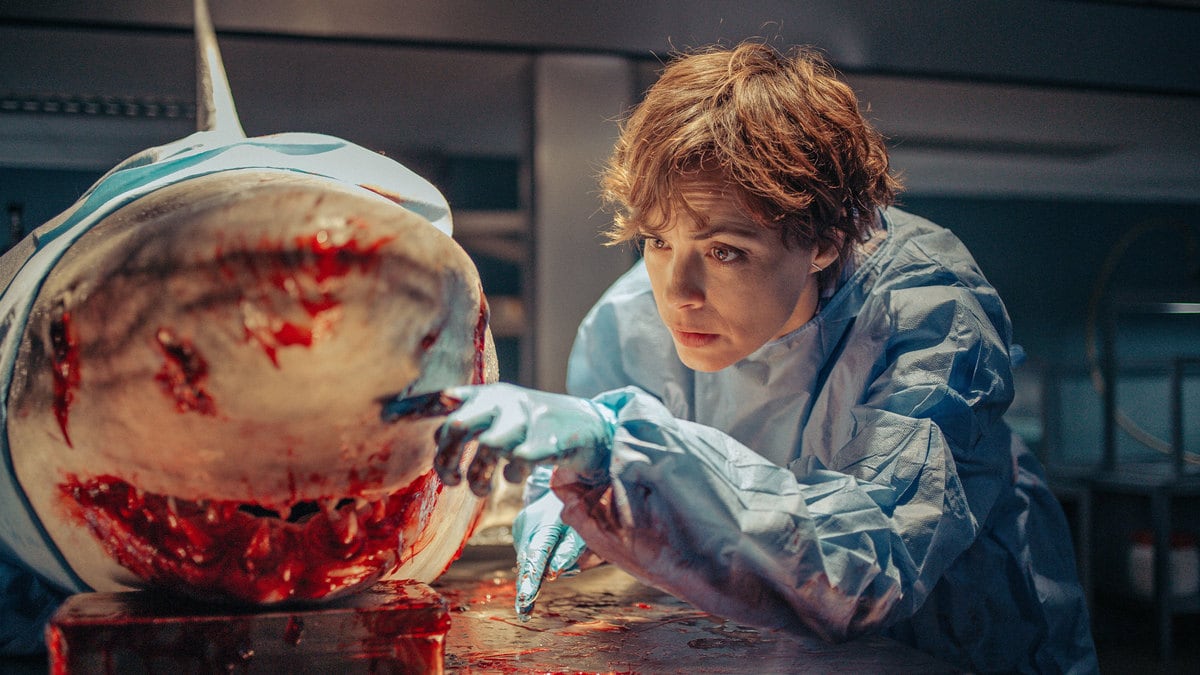What a week it’s been for sharks. Great whites and hammerheads galore have been enjoying all the press these days, thanks to an unhinged rant from Donald Trump about the aquatic creatures and a new Jaws-inspired Netflix movie. And to think—it’s not even Shark Week yet! (Mark your calendar: That’ll start on July 7.)
Netflix’s new movie Under Paris has a completely bonkers premise. A giant shark has infiltrated the murky waters of the Seine, swimming beneath the City of Lights, a looming threat for all Parisians. I love movies like this, ones that you can explain in a sentence to your closest friends, your colleagues, your parents: “This new Netflix movie is about a shark living under Paris.” That’s all you need to know. Go turn it on and see the chaos for yourself.
There are follow-up questions, however—like, for example: How the hell did a giant shark find his (or her!) way to the Seine? How did this shark get so damn big? And, uh… why does it even matter if the shark is in the Seine, if no one is usually swimming around those parts? We watched the movie and got answers, although they might not be what you expect.
(Warning: Slight spoilers for Under Paris to follow.)
It’s important to note that Under Paris takes place in our universe starting in July 2024, meaning that the Summer Olympics in Paris are right around the corner. While most of the swimming events are slated to take place in pools around the city, one leg of the triathlon is set to see athletes dive into the dangerous waters of the river Seine. That shark—who has been in Paris since 2021—could kill them at any moment.
This year’s swimming portion of the triathlon will take place in the Seine, but hopefully, without the looming threat of a giant shark. That said, I do have faith that, if there were to be a monstrous beast residing in the Seine, the city of Paris would likely relocate the race. Here, the Olympic coordinators get into a Jaws situation: They don’t want to change anything and don’t see the shark as a major threat. Can’t someone just kill the damn thing already?
It’s not that easy. While the Parisian government wants to execute the creature, a team of animal activists is trying to stop the “genocide” of sharks. Humans have already been throwing trash into their ecosystem. We needn’t disrupt their lives any further. The reason this shark is in the Seine, after all, is because the Pacific Garbage Patch kicked it out of its original home in the ocean. If the government kills the shark, it will face the wrath of these protesters.

Under Paris.
NetflixThen, there’s the actual issue of figuring out how to take down this shark. It’s no megalodon, but it’s definitely bigger than Bruce from Finding Nemo. Even the Jaws shark pales in comparison to this guy… who is actually not a guy, in fact. After a diving team is able to capture a shark they believe to be the one lurking around the Seine, they make a shocking discovery: Not only is this a female shark, but she’s also pregnant. So, that means… there has to be a daddy shark making all these baby sharks.
OK, the marine biologists studying these sharks conclude that’s actually not the case. By some French magic, the scientists are able to deduce that this shark they’ve captured is actually a baby of the original big shark, and it’s the mother who is still swimming. But wait—if mama has been under Paris for the past few years, how did she find a mate?
Well, she didn’t need one. She’s an independent woman who doesn’t need a man! If you thought Under Paris couldn’t get any weirder, guess again. The movie dreams up a world where female creatures are able to reproduce without insemination. I am in awe. How… feminist?
Let’s go back to the Darwin-inspired quote Under Paris shows us right before the title card and the film’s beginning: “The species that survive aren’t the strongest species, nor are they the most intelligent, but rather the ones who best adapt to change.” Because these female sharks have been trapped in the Pacific Garbage Patch for years, they’ve adapted to their inability to find male sharks with which to reproduce. Now, they can make their own babies.
While the original big shark—who the scientists name Lilith—was swimming around in the River Seine, she was also producing an army of smaller (but still, relatively speaking, big) spawn, really taking over the ecosystem. It’s payback after the humans infiltrated her habitat with trash and other pollution. Revenge is a dish best served bloody.
Heading into the final act, there’s quite a bit going on. The Olympics are about to start. A huge protest to save Lilith will be taking place outside of the opening ceremony. And a flurry of unknowing swimmers are about to dive into mutant shark-infested waters.
We won’t spoil the ending—you’ll have to watch it yourself to see if the sharks or the humans come out on top—but how intense! Let’s just say that there are ample Under Paris sequel opportunities. Personally, I’m still not over how, in this movie, there is a shark swimming around the catacombs of Paris, and not only that, the shark can also reproduce by itself. Everyone in the world should be talking about this chaotic movie—the film has done fairly well on Netflix, so now, let’s make it go viral! Forget Jaws; Under Paris is rivaling Sharknado levels of shark hoopla.








